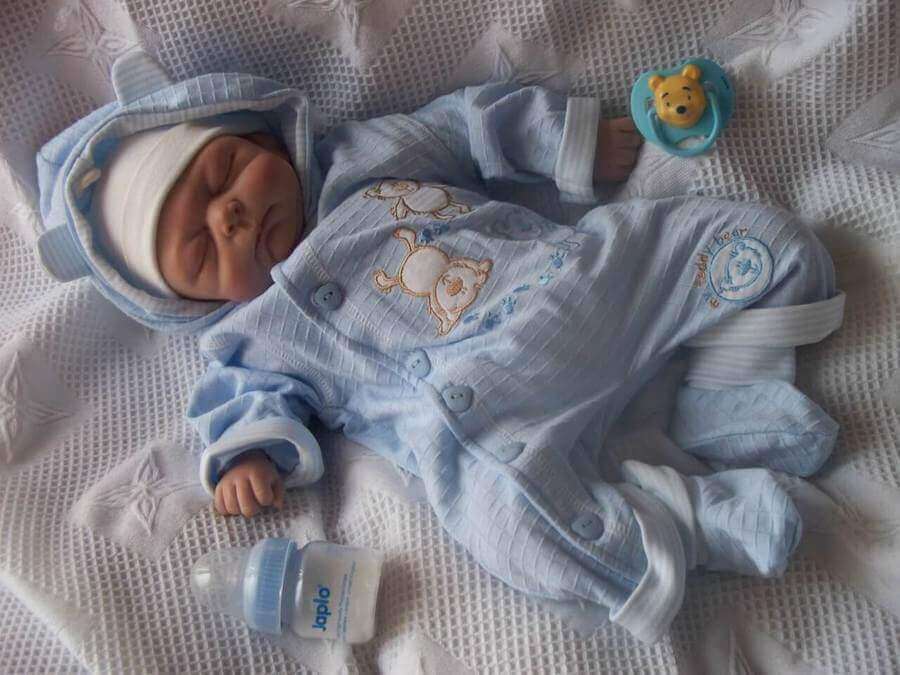How Can I Tell If My Baby Is Cold? Tips for New Parents

It’s very common to see babies wrapped up when they’re small. This is especially true since you need to take certain precautions to regulate their body temperature. However, the common question is how to know if your baby is cold.
This is a skill that parents usually learn through practice. Discover some signs that can indicate if your baby needs more or less clothing in this article.
How to tell if your baby is cold
In the first months of life, babies’ temperatures can vary because their blood circulation system isn’t mature yet.
This means that babies can’t naturally regulate heat in their body. You might notice that your baby’s hands and feet are generally cold.

There are three parts of the body that can help you determine your baby’s temperature: tummy, legs and neck. Touching them can indicate if your baby is hot or cold.
However, the clear way to know is if they have rosy cheeks and cry from discomfort because of their temperature. In some children, their nose and lips turn blue. In addition, that can be a sign that they have trouble breathing.
Tips for new parents
It’s very common to want to overprotect your baby because you’re worried about his temperature. However, be careful not to overprotect them because it actually makes them more vulnerable to the cold.
To avoid feeling uncomfortable and cold, you can take the following tips into account:
Cover him with a blanket
Another way to determine if your baby is cold is by wrapping him in a blanket. If you notice that he moves a lot trying to take it off, he’s probably uncomfortable. Otherwise, if you notice that he stays still, he likes the warmth.
Dress your baby in layers
To avoid changing the climate too drastically, we recommend dressing your baby in layers. This means you dress him in light and soft clothes first, then heavier jackets and coats on top.
Also, instead of wearing a single thick coat, give him several thin layers to make him feel warm. Therefore, if your baby is hot or cold, it’ll be easier to take some layers off or add more on.
Remember, it’s best to dress your child in cotton clothing. In addition to being soft, they make it easier to move around in any climate.
Cover his hands, feet and head
One of babies’ characteristics is that they lose heat rapidly. Therefore, cover your baby’s hands, feet and head with cotton garments that are soft to touch. Ideally, hats, socks and mittens let the skin breathe even in cold seasons.
Children under two can be vulnerable, and they’re even more vulnerable when they’re under 6 months. Therefore, if it’s very windy or cold, it’s best to stay home.

Adjust the temperature of the room
Small children are sensitive to temperature changes, so you should watch it carefully. Keep the room between 73-75 degrees F. Also, make sure that the air circulates and doesn’t blow directly at your baby.
In conclusion, if your baby is cold, there are lots of things you can do to make him feel at ease. Keep in mind that the process of thermoregulation, as well as blood flow, hasn’t fully matured. As a result, some parts of your baby’s body will be cold.
Look out for signals to know if your baby needs to be warmer.
It’s very common to see babies wrapped up when they’re small. This is especially true since you need to take certain precautions to regulate their body temperature. However, the common question is how to know if your baby is cold.
This is a skill that parents usually learn through practice. Discover some signs that can indicate if your baby needs more or less clothing in this article.
How to tell if your baby is cold
In the first months of life, babies’ temperatures can vary because their blood circulation system isn’t mature yet.
This means that babies can’t naturally regulate heat in their body. You might notice that your baby’s hands and feet are generally cold.

There are three parts of the body that can help you determine your baby’s temperature: tummy, legs and neck. Touching them can indicate if your baby is hot or cold.
However, the clear way to know is if they have rosy cheeks and cry from discomfort because of their temperature. In some children, their nose and lips turn blue. In addition, that can be a sign that they have trouble breathing.
Tips for new parents
It’s very common to want to overprotect your baby because you’re worried about his temperature. However, be careful not to overprotect them because it actually makes them more vulnerable to the cold.
To avoid feeling uncomfortable and cold, you can take the following tips into account:
Cover him with a blanket
Another way to determine if your baby is cold is by wrapping him in a blanket. If you notice that he moves a lot trying to take it off, he’s probably uncomfortable. Otherwise, if you notice that he stays still, he likes the warmth.
Dress your baby in layers
To avoid changing the climate too drastically, we recommend dressing your baby in layers. This means you dress him in light and soft clothes first, then heavier jackets and coats on top.
Also, instead of wearing a single thick coat, give him several thin layers to make him feel warm. Therefore, if your baby is hot or cold, it’ll be easier to take some layers off or add more on.
Remember, it’s best to dress your child in cotton clothing. In addition to being soft, they make it easier to move around in any climate.
Cover his hands, feet and head
One of babies’ characteristics is that they lose heat rapidly. Therefore, cover your baby’s hands, feet and head with cotton garments that are soft to touch. Ideally, hats, socks and mittens let the skin breathe even in cold seasons.
Children under two can be vulnerable, and they’re even more vulnerable when they’re under 6 months. Therefore, if it’s very windy or cold, it’s best to stay home.

Adjust the temperature of the room
Small children are sensitive to temperature changes, so you should watch it carefully. Keep the room between 73-75 degrees F. Also, make sure that the air circulates and doesn’t blow directly at your baby.
In conclusion, if your baby is cold, there are lots of things you can do to make him feel at ease. Keep in mind that the process of thermoregulation, as well as blood flow, hasn’t fully matured. As a result, some parts of your baby’s body will be cold.
Look out for signals to know if your baby needs to be warmer.
All cited sources were thoroughly reviewed by our team to ensure their quality, reliability, currency, and validity. The bibliography of this article was considered reliable and of academic or scientific accuracy.
- Smith, J. Alcock, G. and Usher, K. (2013) Temperature measurement in the preterm and term neonate: A review of the literature. Neonatal Network , 32 (1): 16-25.
- Smales, O R and R Kime. “Thermoregulation in babies immediately after birth”Archives of disease in childhood vol. 53,1 (1978): 58-61.
This text is provided for informational purposes only and does not replace consultation with a professional. If in doubt, consult your specialist.








